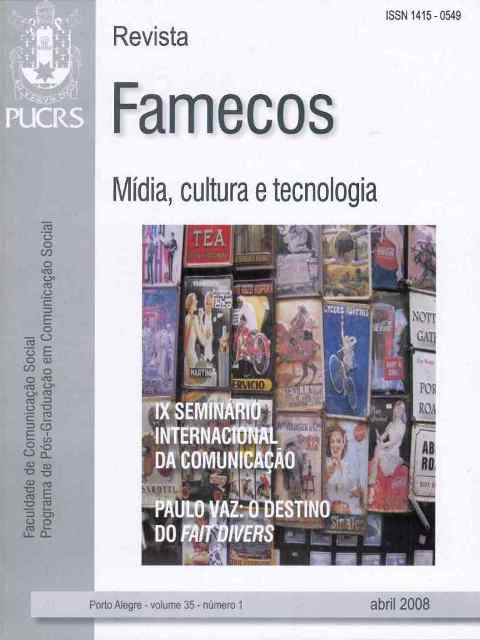Of the sense of mediation: on the margins of Jesus Martín-Barbero´s thought
DOI:
https://doi.org/10.15448/1980-3729.2008.35.4096Keywords:
Communication, mediations, meaningAbstract
The work of Jesús Martín-Barbero supplied communication studies with remarkable theoretical contributions, even though his analysis is focused on specific cultural experiences related to Latin American background. The purpose of this paper is to discuss the range of a specific concept in his theory for communication studies: the idea of mediations. This very idea nonetheless will not have clear outlines until associated with another concept, at first not really important to MartínBarbero’s theory of mediation: the meaning.Downloads
References
GREIMAS, A. J. e COURTÉS, J. Dicionário de Semiótica. São Paulo: Cultrix, 1979.
MARTÍN-BARBERO, J. La comunicación en las transformaciones del campo cultural. lteridades, n. 5, México, 1993.
MARTÍN-BARBERO, J. Comunicación fin de siglo. ¿Para donde vá nuestra investigación? Telos, n. 47, Madrid, 1996.
MARTÍN-BARBERO, J. Dos meios às mediações. Comunicação, cultura e hegemonia. Rio de Janeiro: UFRJ, 1997.
MARTÍN-BARBERO, J. Los ejercicios del ver. Hegemonía audiovisual y ficción televisiva. Barcelona: Editorial Gedisa, 1999.
MARTÍN-BARBERO, J. Decontrución de la crítica: nuevos itinerarios de la investigación. In: LOPES, M.I.V. & FUENTES, R. Comunicación. Campo y objeto de estudio. Guadalajara: ITESO, 2001.
MARTÍN-BARBERO, J. Oficio de Cartógrafo. Travesías latinoamericanas de la comunicación en la cultura. México: Fondo de Cultura Económina, 2002.
OSGOOD, C. E., SUCI, G. J. & TANNENBAUM, P. H. The measurement of meaning. Urbana: University of Illinois Press, 1957.
PÊCHEUX, M. Semântica e discurso. Uma crítica à afirmação do óbvio. Campinas: Unicamp, 1995.
POTTIER, B. (1992). Lingüística Geral: Teoria e Descrição. Rio de Janeiro: Presença, 1978.
Downloads
Published
How to Cite
Issue
Section
License
Copyright
The submission of originals to Revista Famecos implies the transfer by the authors of the right for publication. Authors retain copyright and grant the journal right of first publication. If the authors wish to include the same data into another publication, they must cite Revista Famecos as the site of original publication.
Creative Commons License
Except where otherwise specified, material published in this journal is licensed under a Creative Commons Attribution 4.0 International license, which allows unrestricted use, distribution and reproduction in any medium, provided the original publication is correctly cited.






